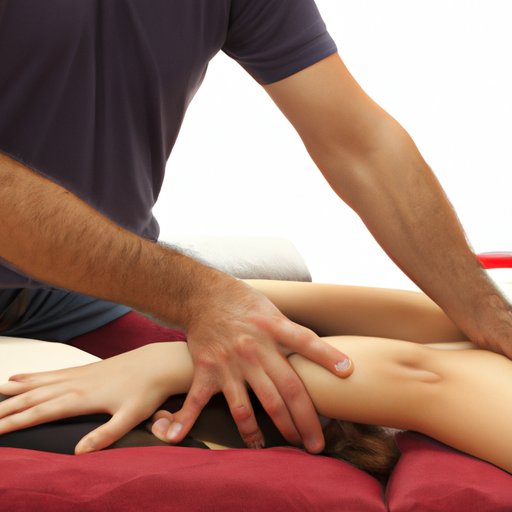
Introduction
Pain is one of the most common reasons individuals seek medical attention. It can manifest in many forms, ranging from mild to severe, and in different parts of the body. While medication can help ease pain symptoms, there are also various natural techniques and tips that can be applied to alleviate or even eliminate pain. This article aims to explore the different approaches to pain relief without medication and their effectiveness.
Meditation and Mindful Breathing Techniques
Meditation and mindful breathing techniques are practices that have been used for centuries to ease various ailments, including pain. Meditation is an effective pain-management tool because it helps individuals focus on their breath, allowing the body to experience a sense of relaxation and relief. By focusing on the present moment, meditation also allows individuals to let go of past and future worries, which can exacerbate pain.
To practice meditation, one can start by finding a quiet and comfortable spot to sit or lie down. Close the eyes and start breathing deeply, focusing on the inhalation and exhalation of air. Thoughts may come and go, and if so, gently bring the focus back to the breath. It may be helpful to start with shorter sessions, gradually increasing the duration over time.
Breathing exercises are similarly effective in pain relief. Focusing on the breath can reduce stress and muscle tension associated with pain. Breathing exercises can be as simple as inhaling and exhaling deeply for a few minutes, repeating a short mantra or phrase, or visualizing a calming scenario.
Incorporating mindfulness practices into one’s daily life has also been shown to improve overall well-being and help individuals manage pain better.
Heat and Cold Therapy
Heat therapy and cold therapy are other natural techniques commonly used to relieve pain. Heat therapy works by increasing blood flow and circulation, reducing stiffness and muscle tension. Types of heat therapy include warm baths, heating pads, and saunas.
Cold therapy is effective in reducing pain, swelling, and inflammation. It works by constricting blood vessels and limiting blood flow to the affected area, numbing the pain sensations. Cold therapy methods include cold packs, ice baths, and ice massage.
Individuals should be cautious when applying heat or cold therapy and avoid extremes temperatures to prevent further damage.
Acupuncture and Acupressure
Acupuncture and acupressure are ancient techniques used to alleviate pain and promote healing. Acupuncture involves inserting thin needles into specific points of the body to release tension and improve energy flow. This technique is used to treat various conditions, including migraines, back pain, and arthritis.
Acupressure, on the other hand, uses the fingers to apply pressure to specific points on the body instead of needles. It works by stimulating certain nerve endings and alleviating pain.
While acupuncture and acupressure are generally safe, individuals should be aware of the risks and potential side effects, including infection and soreness. It is essential to seek certified professionals.
Massage
Massage therapy is another natural technique that can help alleviate pain. It involves manipulating the body’s soft tissues to improve circulation, reduce muscle tension, and promote relaxation. Various types of massage can target specific pain areas, including Swedish massage, deep tissue massage, and trigger point massage.
It is important to note that massage therapy should not replace medical care for chronic pain conditions. However, it can be a useful complementary technique to manage symptoms. Individuals should seek professional therapists to ensure safety and effectiveness.
Exercise and Stretching
Exercise and stretching are excellent methods to maintain healthy muscles and joints, reducing the risk of pain and injury. Regular physical activity releases endorphins, which can naturally reduce pain sensations. Simple exercises, such as walking or gentle yoga, can help alleviate pain and improve overall well-being.
Stretching is also vital in pain prevention and management. It can improve flexibility and range of motion, reducing the risk of muscle strain and injury. It can also relieve muscle tightness associated with pain symptoms.
It is essential to consult with a medical professional before starting any exercise program, especially if experiencing chronic pain.
Conclusion
Pain relief without medication is possible, with many natural techniques and tips available. Incorporating relaxation and mindfulness practices, heat and cold therapy, acupuncture and acupressure, massage, and exercise and stretching can all help alleviate pain symptoms. It is important to remember that different techniques work for different individuals and that it is necessary to consult with a medical professional if pain persists.
Natural pain relief techniques may not cure an underlying condition, but they can ease symptoms and promote overall well-being. These techniques allow individuals to take control of their health and live pain-free increasingly.





